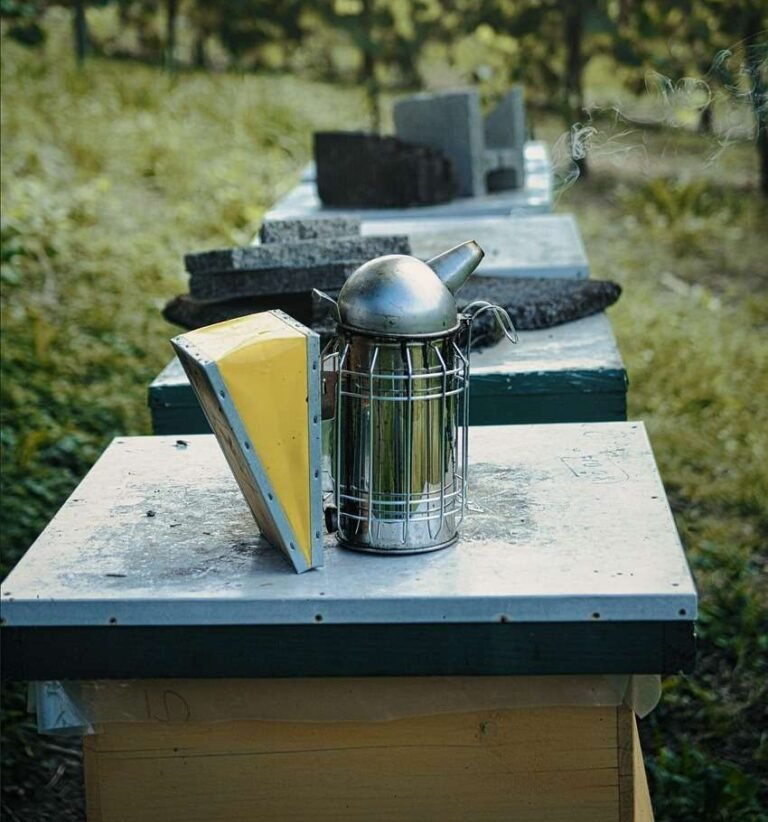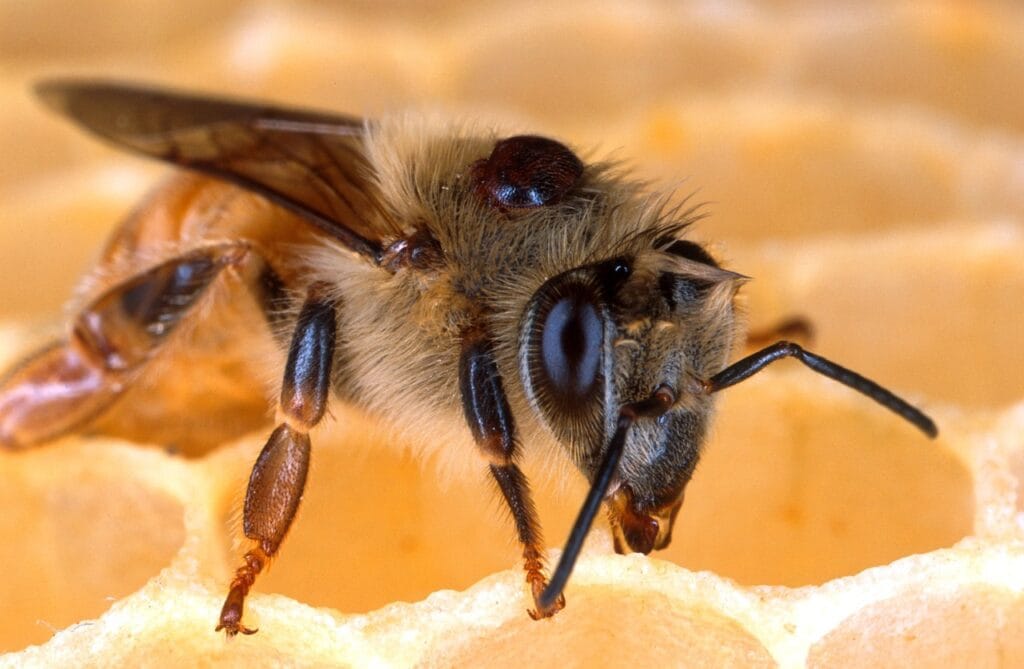Beginning your beekeeping journey requires some essential tools and equipment, which comes with a price. Here’s what to expect.
Essential Gear for Beekeepers
| Item | Why You Need It | Typical Beginner Price (USD, 2025) |
|---|---|---|
| Langstroth hive set (brood box, 10 frames, bottom board, inner & telescoping covers) | The colony’s permanent home. Standard dimensions make parts interchangeable. | $200 – $300 for 1 complete hive kit[1][2] |
| Protective clothing: veil, jacket or full suit, gloves | Prevents stings while you learn bee behavior. | $90 – $180 total[3] |
| Hive tool | Pries apart boxes/frames glued with propolis; scrapes burr comb. | $10 – $15[1] |
| Smoker + fuel | Cool smoke masks alarm pheromones and calms bees. | $25 – $40[1][3] |
| Bee brush (optional) | Gently sweeps bees off combs during inspections or harvest. | $5 – $10 |
| Feeder (entrance or in-hive) | Supplies sugar syrup to new or nectar-deprived colonies. | $5 – $15[1] |
| Queen excluder (optional first year) | Keeps the queen out of honey supers if you add them. | $10 – $20[1] |
| Second deep or medium honey supers + 10 frames each | Added mid-season as the colony grows; needed for surplus honey. | $80 – $120 per box with frames |
| Reference book / local course | Rapid learning curve; helps you diagnose problems early. | $20 – $75[2] |
Bees themselves
- 1 package (≈3 lb with mated queen) or nucleus colony (5-frame “nuc” with drawn comb)
- Typical price: $150 – $200 depending on region and stock[4]
Startup Cost Range
1 hive + bees + basic gear (conservative):
- Hive kit: $230
- Bees: $180
- Protective gear: $120
- Tools & smoker: $45
- Feeder & misc.: $15
Total ≈ $590
More robust setup (extra super, books, optional items):
- Add 1 honey super + frames: +$100
- Queen excluder, brush, spare smoker fuel: +$25
- Beginner class/book: +$50
Total ≈ $765
Most U.S. beginners therefore spend $550 – $800 to get one colony through its first season[3][4].
Recurring & Year-Two Costs
- Sugar for spring/fall feeding: $25 – $40 per hive per year.
- Varroa mite treatments & health supplies: $30 – $60.
- Additional supers or a second hive as your apiary grows: $80 – $300 each.
Many woodenware and tools purchased up front last 5-10 years with minimal upkeep, so later annual costs drop sharply once the basic kit is in place[4].
Money-Saving Tips
- Buy an unassembled hive kit and paint/assemble it yourself (saves ≈$40).
- Join a local beekeeping association; members often loan extractors and sell used boxes cheaply.
- Catch a local swarm (free bees) once you have equipment ready, but still budget for a purchased package as insurance.
- Build simple hive stands from scrap lumber or cinder blocks.
Starting small with solid, essential equipment keeps both bees and beekeeper comfortable while you gain experience and spread costs over time.
⁂
- https://bees.caes.uga.edu/beekeeping-resources/getting-started-topics/getting-started-beekeeping-equipment.html
- https://www.dadant.com/catalog/hives/10-frame/hive-kits-10-frame/a-m58101-honey-of-a-hobby-beginner-kit-no-1
- https://blythewoodbeecompany.com/blogs/news/how-much-does-it-cost-to-start-beekeeping
- https://www.beekeepingfornewbies.com/starting-costs/



